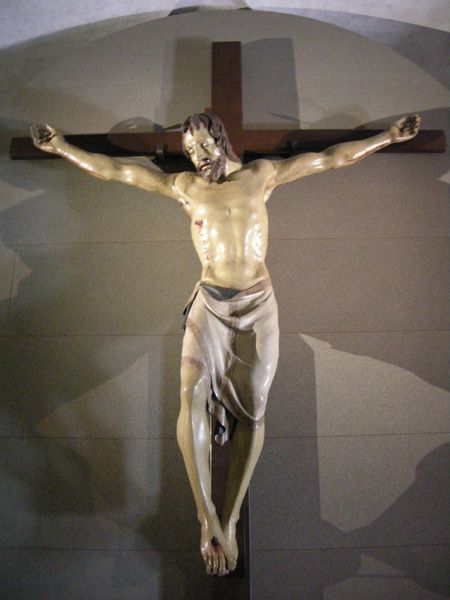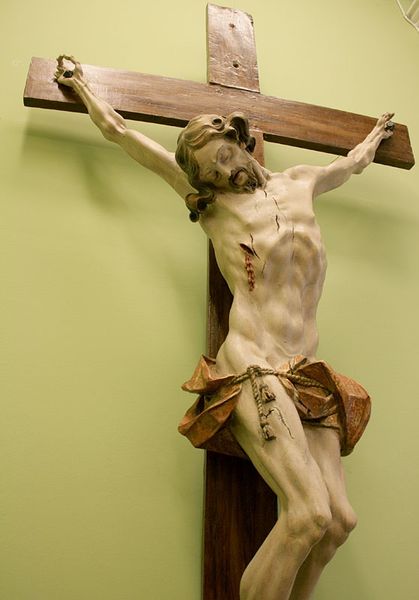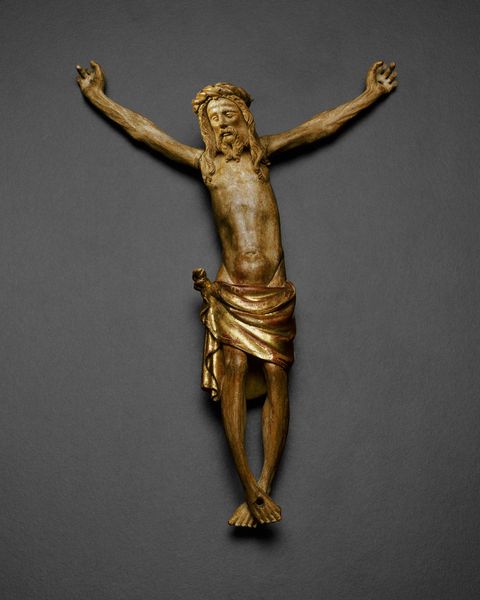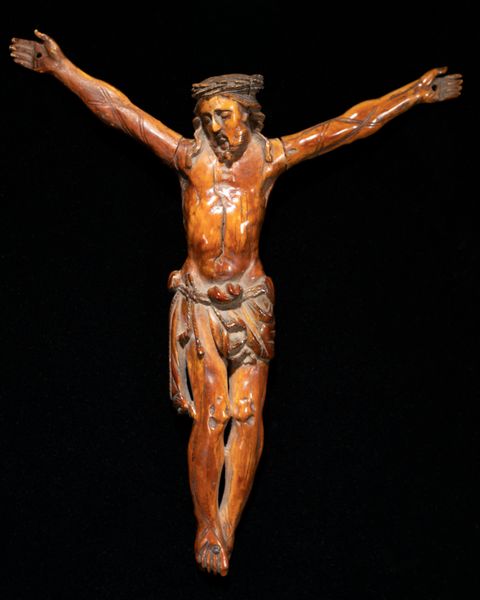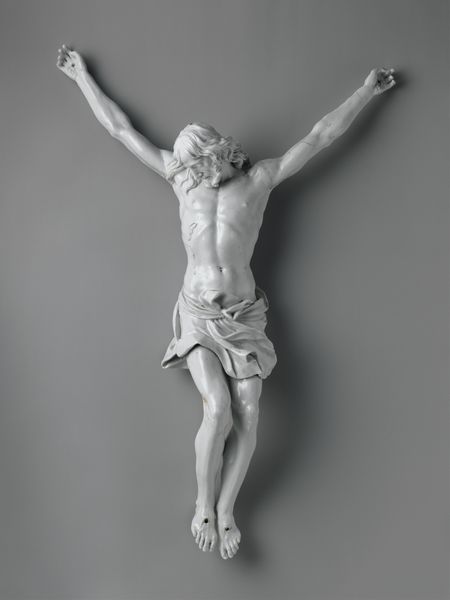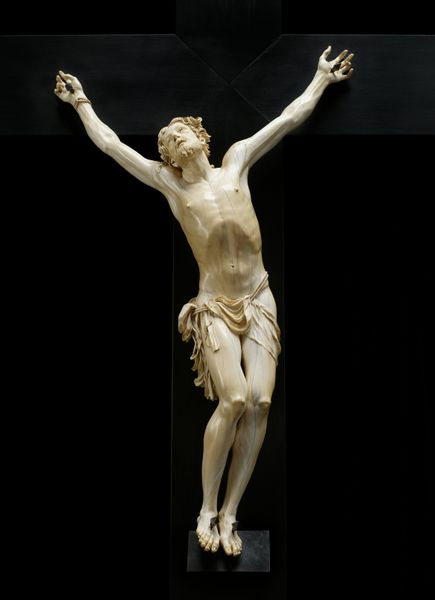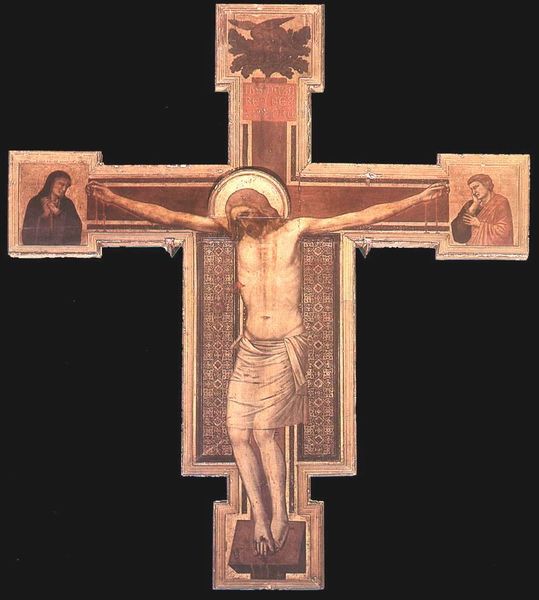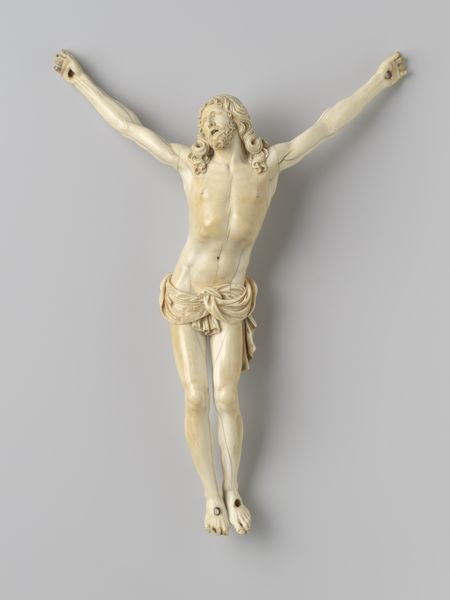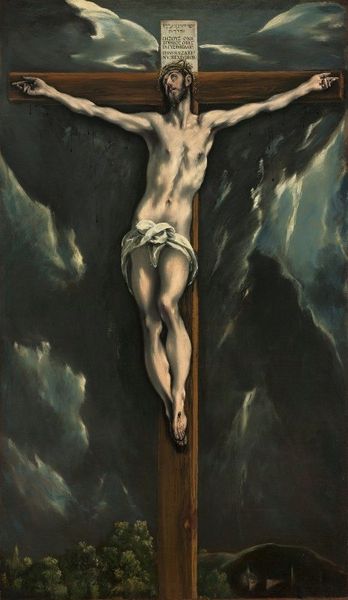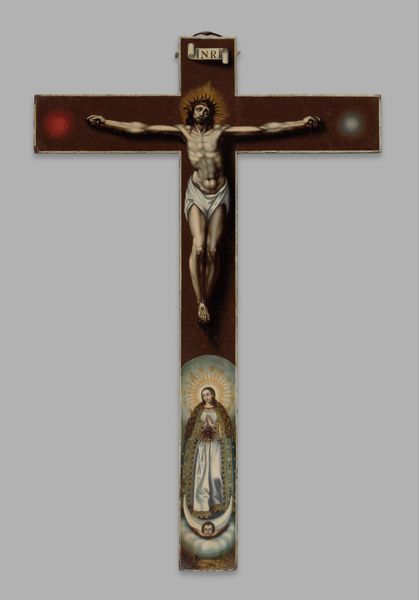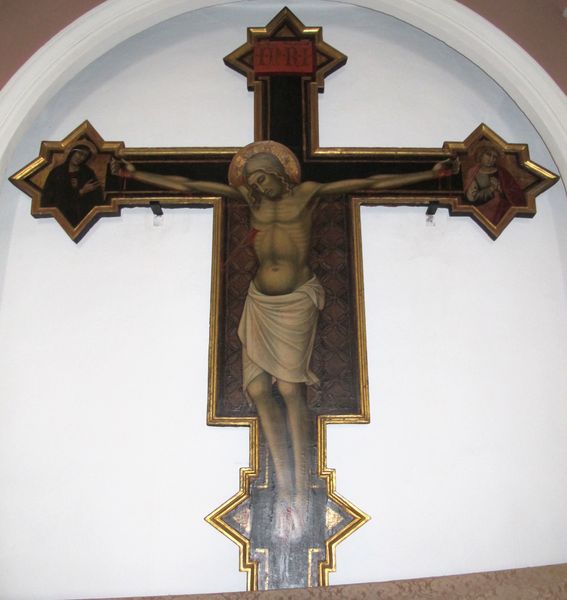
carving, sculpture, ivory
#
portrait
#
statue
#
medieval
#
carving
#
sculpture
#
figuration
#
sculpture
#
history-painting
#
academic-art
#
ivory
Copyright: Public domain
Editor: Here we have "Santa Maria Della Fonte Nuova" by Giambologna, a carved ivory sculpture. It’s a powerful image of the crucifixion. What strikes me is the contrast between the delicate material and the raw emotion it portrays. What historical narratives do you think this piece engages with? Curator: The ivory carving evokes both devotion and status. During this period, sculptures like these served not just religious functions, but also displayed the wealth and sophistication of their patrons. The immaculate and graceful carving of Christ signals power and grace rather than pain and suffering. The decision to carve it in ivory would have dictated its place in wealthy family’s private collections, becoming signifiers of cultural capital. Editor: That’s fascinating. I hadn't considered how the material itself could communicate so much about the patron. Does the artistic style have any significance regarding that? Curator: The Renaissance ideals of beauty and anatomical precision, as seen here, elevated religious iconography. But also, this was at a time when religious institutions, in the midst of the Reformation, leveraged art for propaganda – promoting certain ideas through commissioned works. Where do you think a piece like this fits in this context? Editor: So, perhaps it was intended not only for private devotion but also to reinforce a particular image of Christ within a broader socio-political struggle? I'll definitely look closer now at how art became part of religious narratives during that era. Curator: Exactly. Consider the broader culture that influenced it. Hopefully now when viewing, you'll be seeing all the voices in dialogue. Editor: That is amazing; thank you for your helpful insights!
Comments
No comments
Be the first to comment and join the conversation on the ultimate creative platform.

